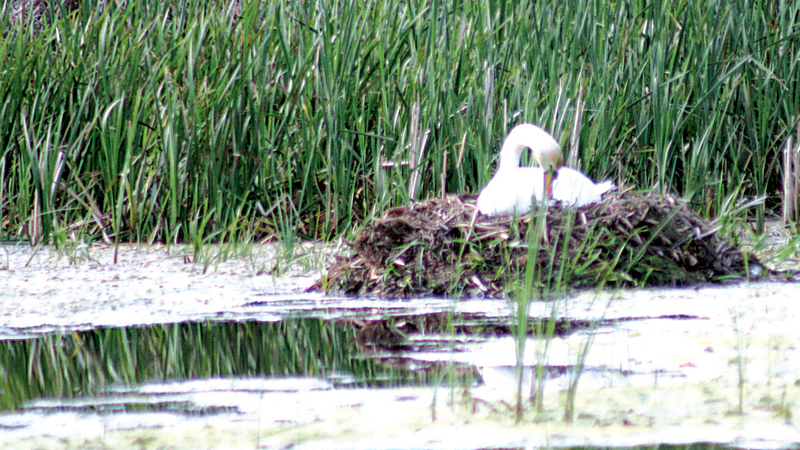SPRING ‘CRUISIN FOR BIRDS

This is the time of year when birds have their brightest plumage, when males claim territories, sing and display and attract mates. It’s the time of year when females build nests, sometimes aided by males, lay eggs, incubate and hatch their eggs, then feed their nestlings.
This is the time of year when there are the most birds in our area, the time when birds look their finest, when they are easiest to spot. They’re easiest to spot but frequently not to get a good look at nor to watch. Cruisin’ I often see a little bird, a warbler or a kinglet or a gnatcatcher, fly across the road ahead, from the top of trees on one side of the road to the other, or a little brown job fly across from bushes on one side of the road to the other, but finding a warbler among the leaves of the trees or a sparrow in the brush is something else.
Cruisin’ for birds is something to do on roads with little traffic, often gravel roads, where it is possible to drive slow, 15, 20, 25 miles per hour, and to stop frequently without bothering other drivers. When I’ve stopped along a highway to look at a bird, even though I’ve got off on the shoulder and traffic could go around me, I’ve had other drivers honk and sometimes wave displaying a single digit on one hand.
Recently I was cruisin’ with a friend one sunny afternoon and two male indigo buntings, two bright blue little birds, one after the other, flew across the road a few feet in front of the car. A few miles after the buntings flashed across the road before us a small heron flushed from the ditch beside the road and flew across the road before us, a green heron, and in the sunlight we saw clearly the green on its back, wings and tail, the color that gives it its name.
Male indigo buntings in bright sunshine, a green heron with green on display, those were highlights of an afternoon cruisin’ for birds. Another highlight was seeing five black-necked stilts wading in shallow water, a temporary pool, no more than a big puddle by a road near our home in northern Indiana. I saw a northern shrike one winter day in Indiana while cruisin’ for birds. I’ve seen bald eagles and ospreys and once a golden eagle, all in Indiana. I’ve seen a goshawk fly across a road in Indiana.
Cruisin’ for birds can be done any time of day in any weather as long as there is visibility and the roads are passable. It can be done in any season. From the comfort of my car in winter I’ve seen snowy owls, short-eared owls, snow buntings and Lapland longspurs and in the trees of a woodland I’ve seen red and white-winged crossbills.
While cruisin’ for birds I’ve noticed changes in bird distribution and in bird numbers. Red-winged blackbirds are one example. As a boy to see redwings I went to a cattail marsh, and frequently went wading, looking for rails and yellowthroats and marsh wrens and other marsh nesters. Red-winged blackbirds were almost exclusively birds of cattail marshes when nesting wrote Dr. Arthur A. Allen, founder of the Cornell University Laboratory of Ornithology. Now redwings also nest commonly in hay fields and pastures and along country roads.
There are many more examples, all evident to the bird watcher who frequently goes cruisin’ for birds.
- Birds As Weather Forecasters – Life In The Outdoors - December 17, 2021
- Rare Bird Spotted In Indiana – Life In The Outdoors - October 8, 2021
- MY EXPERIENCE WITH DEER – Life In The Outdoors - July 30, 2021


